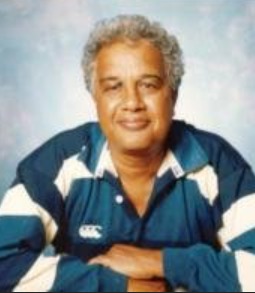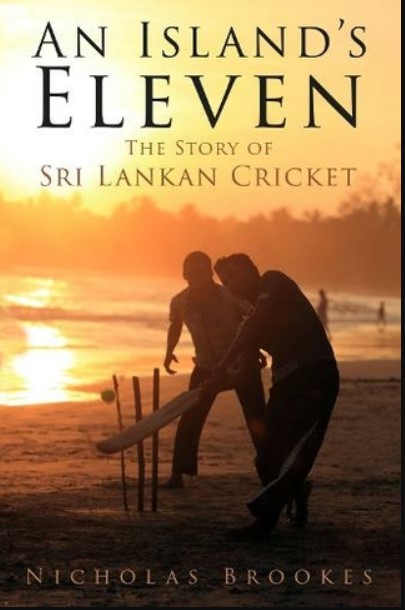The Captivating “Story of Sri Lankan Cricket” by Nicholas Brookes-by Michael Roberts

Source:Thuppahis
Martin Chandler:…. in CricketWeb, 14 August 2022, reviewing Nicholas Brookes: An Island’s Eleven: The Story of Sri Lankan Cricket, The History Press, 2022, 535 pp, Rating: 4.5 stars …. with highlighting emphasis imposed by The Editor, Thuppahi

In the final sentence of his preface Nicholas Brookes expresses the view; For as much as I’ve tried to ‘tell the story of Sri Lankan cricket’, this work is merely a starting point. This is, I presume, a reference to the paucity of existing literature on Sri Lankan cricket rather than an attempt to downplay his own contribution to that particularly genre. It is inevitably unfortunate and disappointing that, to date, none of Muttiah Muralitharan, Arjuna Ranatunga, Samantha Jayasuriya, Chaminda Vaas, Mahela Jayawardene, Kumar Sangakkara or Rangan Herath have been persuaded to write an autobiography, but the game in Sri Lanka does at least now have a comprehensive history, and one I hope might become the touchstone for similar histories of the game in Ireland, Zimbabwe and Bangladesh.
The full Sri Lankan training squad in Colombo with the bus taking them to Nuwara Eliya for acclimatization & training prior to the journey to England for the 1975 World Cup with Asst Manager Neil Perera standing on the left and Trainer Raja Wickremasinghe and Manager KMT Perera standing on the right
The Sri Lankan cricketers & staff pay puja to the powers above seeking fortitude before the contest for the World Cup in Pakistan in 1996
One of five countries to acquire Test status in my lifetime Sri Lanka was the first to do so back in 1982, so we are now forty years on from that historic landmark. Despite that relatively short history as a full member of the ICC, cricket in Sri Lanka has a long history, and goes back as far as 1796 and the first third of the book covers that period of ‘pre-history’.
There are, to anyone who has read widely on the game, cricketers from what was then Ceylon whose names are familiar ones. Some, such as Kelaart, De Saram and Sathavisam are just names in history books who played no significant cricket outside their own island. From the end World War Two onwards however there are more familiar names, Laddie Outschoorn, Gamine (sic) Goonesena, Stanley Jayasinghe and Clive Inman all plying their trade in England.
My late father spent most of his two years National Service in Ceylon playing cricket and knew Goonesena. It is probably a disappointing reflection on both of us that despite our shared love of cricket we never really discussed how and why the two had come across each other, and it wasn’t until reading An Island’s XI that I knew very much a man who was clearly a very fine all-round cricketer, nor indeed very much of the lives, careers and personalities of any of the others whose names I have mentioned.
Life at Test level was a struggle for the Sri Lankans, whose early years contained many more lows than highs, and when they did finally discover a match winning bowler in Muralitharan in 1995, the Australian umpires Darrel Hair and Roy Emerson no balled him for throwing.
Internal strife and unrest meant that Australia and West Indies then refused to travel to Sri Lanka for matches to be played there as the Lankans co-hosted the 1996 World Cup. Against that backdrop nothing was expected of the joint hosts in that tournament, but in the event the team spirit forged by Ranatunga took Sri Lanka to the final where, ultimately at a canter, they famously defeated the Australians.
Moments of Triumph during the final of the World Cup at Lahore, 17 March 1996 — courtesy of Getty Images
The history of Sri Lankan cricket after 1996 is inevitably better known, that of a side that increased in stature and produced a number of players who touched greatness in any currency. It was, I suppose, inevitable that there would then be a correction and An Island’s Eleven closes on that note.
Cricketing histories, as with those of any other subject, are written to inform and educate and are always going to contain plenty of straightforward factual information, and they often contain weighty statistical sections. An Island’s XI does not follow that pattern and, for a man who has been known to frequently bemoan the lack of a decent statistical section in a biography or autobiography I find myself being delighted that this time there are no scorecards, averages or lists in sight.
And the reason this is a good thing is because Nicholas Brookes’ thoroughly researched book is most certainly not a dry history. To assist him in writing the book Brookes relocated to Sri Lanka, and his affinity for the country is obvious.
Nick Brookes facing a lethal ‘weapon’ at Mount Lavinia Beach … defending a huge wicket
There are elements of drama in some of the match descriptions, and Brookes is not afraid to add his own, always measured, contributions to any debate. Perhaps most importantly of all the many individuals involved all receive much more than a few matter of fact biographical details. By way of example the account of the life of Sathavisam is a masterpiece. A gifted batsman Sathavisam was also a complex character, and at one point spent twenty months in custody before, after a trial, being acquitted of the murder of his wife.
Sathasivam with his lawyer Colvin R. De Silva on his left after being found not guilty
The lives of most of Sri Lanka’s cricketers have not been quite so eventful as Sathavisam’s, but An Island’s XI does justice to them all, and this thorough, interesting and well written history fills a substantial gap in the literature of the game very well indeed
*****
A NOTE: the full caption of the second photograph depicting the “Moments of Triumph” when Sri Lanka nailed the World Cup final at Lahore on 17th March 1996 runs as follows

LAHORE, PAKISTAN – MARCH 17: Sri Lanka captain Arunja Ranatunga (c) celebrates with fellow batsman Aravinda De Silva and team mates whilst Shane Warne (l) and Glen McGrath react as umpire Steve Bucknor looks on after the 1996 Cricket World Cup Final between Australia and Sri Lanka played at the Gaddafi stadium on March 17, 1996 in Lahore, Pakistan….. Photo by Allsport/Getty Images.













